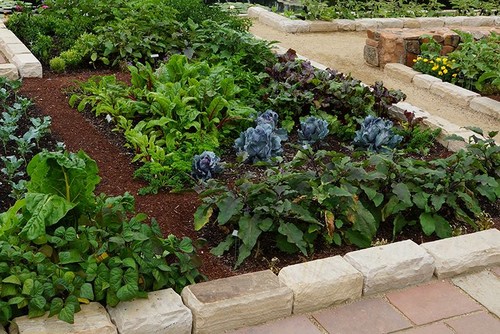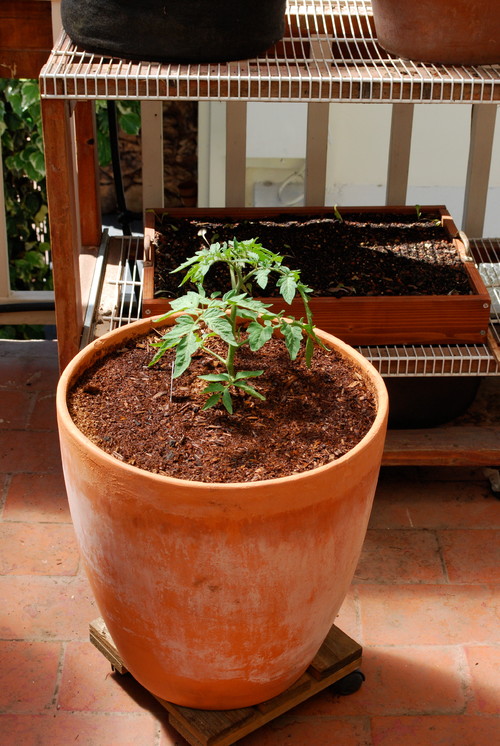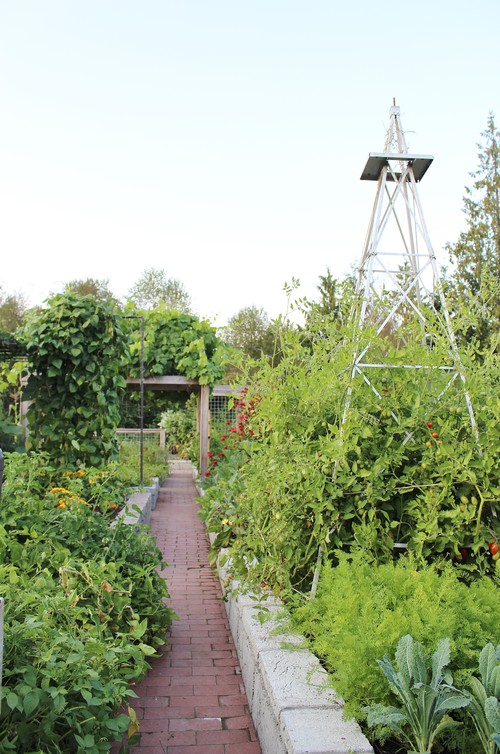Here's Why You Should Plant a 'Victory Garden' While Sheltering at Home This Spring
Here's Why You Should Plant a 'Victory Garden' While Sheltering at Home This Spring
Concerns about the coronavirus have made leaving the house to go grocery shopping, surrounded by other people, feel downright dangerous. But one can't exist on rice and spaghetti alone. If you're concerned about a shortage of fresh vegetables in your fridge, you might be a prime candidate for the victory garden trend.
Victory gardens first became a thing about a hundred years ago during World War I, when Americans at home, away from the battlefield, were urged to contribute to the cause by growing vegetables in every flowerpot and patch of land available. These victory gardens resurged during World War II, and they're enjoying yet another rebirth today due to the coronavirus pandemic.
According to the New York Times, seed companies are currently inundated with requests, and some are reporting a shipping backlog of close to a month.
"Even with a small amount of acreage, homeowners are able to grow large gardens—and these assets can reduce the number of trips to the grocery store and reduce your odds of contracting the COVID-19 virus," says Tim MacWelch, owner and lead instructor at Advanced Survival Training in Northern Virginia.
Here's more about the history of victory gardens, plus some advice for planting your own little patch of edible foliage fast.
A history of victory gardens
Photo by Verdant Landscape Group, LLC
Food rationing was a part of life during both world wars, so the government urged Americans to pitch in by tending home garden plots.
"There were also labor and transportation shortages during these periods, which made it difficult to move large harvests to stores, so everyday Americans helped out by planting fruits and vegetables at home—and millions participated by creating victory gardens," explains Susan Brandt, president of Blooming Secrets.

Photo by Steve Masley Consulting and Design
Empty lots, front lawns, rooftops, and random pots—all were worthy spaces for sowing these wartime seeds.
"Neighbors grew different vegetables and shared their produce with each other, and according to the U.S. Department of Agriculture, more than 20 million American homes had a victory garden," says Brandt. The result? This program made a significant difference in food production.
"Harvests from private homes were estimated to be 9 or 10 million tons," Brandt adds. Some estimates say that at one point, victory gardens produced 40% of the country's fresh fruits and vegetables.

Photo by J & S Landscape
And even before the novel coronavirus came along, home gardens have actually been taking off, thanks to the farm-to-table trend that has people interested in growing their own fresh food.
"For a few years now we've seen a heightened interest in edible gardens as the concepts of living a net-zero life, avoiding GMOs, and eating organically appeals to so many people," says Isara Ongwiseth, lead designer at FormLA Landscaping.
So while there aren't any breakdowns in our national food chain, since grocery shopping has become stressful, you could start digging in the dirt with the goal of reducing your number of store trips.
Plus, since we're supposed to stay close to home for the coming weeks, tending a mini plot is a fun task to tackle right in your backyard.
"And gardening is a real workout since planting and weed-pulling strengthens your back, arms, and legs," Brandt adds.
How to grow a victory garden"Planting your own garden is perfect timing right now because the weather is getting better all over the country, and you can even sow some seeds inside and then transplant them to the ground later on," says Brandt.

Photo by Kimberley Bryan
Plus, you don't need an actual yard to plant seeds.
"You can definitely use containers, a windowsill, or even grow bags, which is another type of container, if your space is limited—and if you have a balcony or access to a roof, try growing them there," says Brandt. All you really need, beyond potting soil, is a sunny location so the seeds can germinate.
"Depending on what you plant, a 3-by-6-foot garden can meet much of a family's need," says Oscar Ortega, maintenance care manager at FormLA Landscaping.
Community gardens also have space where you can sign up to garden, though you'll have to keep social distancing in mind when you enter.
Which vegetables grow the fastest?
Photo by Jennifer Ashton, Allied ASID
Many of the healthiest veggies are also easy (and quick) to grow, including leafy greens like arugula, bok choy, and Swiss chard.
"Other good candidates are zucchini and cucumbers, and herbs are probably the fastest ones, such as thyme, oregano, chives, and parsley," says Brandt.
"It's easier to grow plants from small 4-inch starters, which can be obtained from some grocery stores and farmers markets, but if you're going the seed route, lettuce is a great place to start," says Ortega.
Here's more on how to grow a garden at home.
The post Here's Why You Should Plant a 'Victory Garden' While Sheltering at Home This Spring appeared first on Real Estate News & Insights | realtor.com®.
Komentar
Posting Komentar